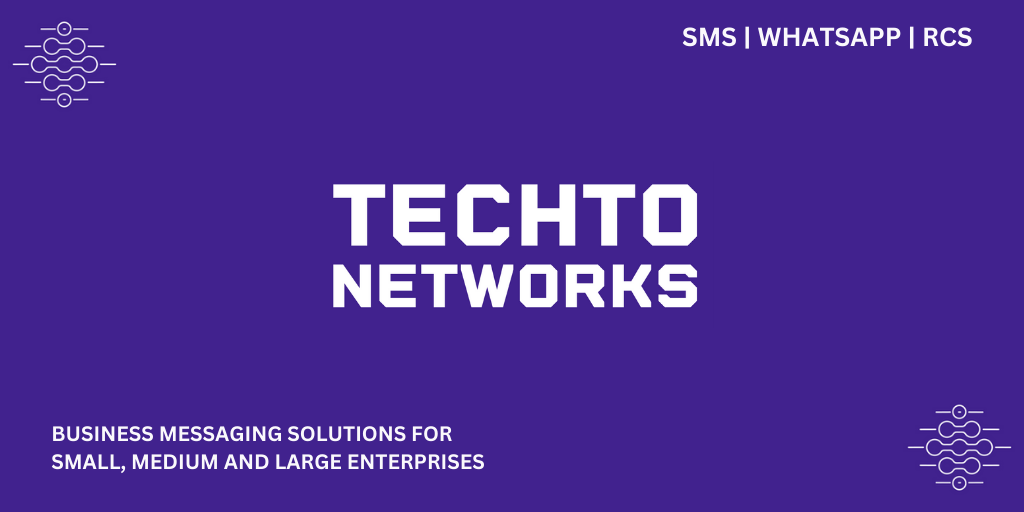Introduction
In today’s digital marketing landscape, channels such as email, social media ads, and push notifications often dominate strategy discussions. Yet, one of the oldest messaging tools continues to outperform many modern channels in reach and reliability — Bulk SMS. Whether for promotions, alerts, reminders, or authentication, Bulk SMS offers unmatched immediacy, open rates, and accessibility.
This article explores what Bulk SMS means in 2025, its key advantages, regulatory requirements, best practices, and future trends — providing a complete guide for businesses seeking to maximize their communication and conversion strategies.
What Is Bulk SMS?
Bulk SMS is the process of sending a large number of text messages simultaneously to a group of recipients using an SMS gateway or service provider. It allows businesses, organizations, and institutions to communicate efficiently with audiences of all sizes.
Key features include:
-
Sending thousands of messages in one click or API request.
-
Supporting various message types — promotional, transactional, service, or alert.
-
Functioning without internet connectivity.
-
Seamless integration with CRM systems, websites, and mobile apps.
Because SMS works on every mobile device — even without a data plan — it remains one of the most universally accessible communication methods.
Why Bulk SMS Still Works (Key Advantages)
1. High Open and Read Rates
SMS boasts open rates of 90–98%, far higher than email. Most users read a text message within minutes of receiving it, making Bulk SMS perfect for time-sensitive campaigns.
2. Instant Delivery and Real-Time Reach
Messages are delivered almost instantly, ensuring urgent updates, offers, or OTPs reach customers when needed most.
3. Works Without Internet Access
Unlike online channels, SMS relies only on mobile networks, ensuring message delivery even in areas with poor data connectivity.
4. Cost-Effectiveness
With per-message costs as low as a few cents (or rupees), Bulk SMS is an affordable option for mass communication and offers a high return on investment.
5. Universal Reach
Every mobile phone user can receive SMS — regardless of device type, app availability, or internet speed — allowing businesses to target both urban and rural demographics.
6. Personalization and Segmentation
Modern SMS platforms enable personalized campaigns using variables like customer names, locations, or purchase histories. This enhances engagement and improves conversion rates.
7. Measurable and Trackable
Bulk SMS systems provide delivery reports, click-tracking, and analytics dashboards, allowing marketers to monitor performance and refine strategies.
8. Regulatory Oversight and Trust
In many countries, including India, regulatory frameworks ensure spam control, sender ID verification, and template approval, increasing consumer trust.
9. Multi-Channel Support
Bulk SMS complements email, social media, and app notifications, reinforcing brand messages and improving overall campaign visibility.
Bulk SMS Regulations and Compliance
If you operate in regulated regions, compliance with telecom guidelines is crucial. In India, for example, Bulk SMS campaigns must adhere to TRAI’s Distributed Ledger Technology (DLT) framework.
1. DLT Registration
Businesses must register on telecom operator DLT portals, submit KYC documents, and approve sender IDs and message templates.
2. Message Template Approval
Each SMS template (promotional or transactional) must be pre-approved. Non-compliant templates are automatically blocked by networks.
3. Sender ID (Header) Rules
-
Promotional SMS: Use numeric sender IDs.
-
Transactional SMS: Use alphabetic sender IDs tied to verified businesses.
4. Do Not Disturb (DND) Compliance
Promotional SMS cannot be sent to DND-registered users unless they’ve opted in.
5. Time Restrictions
Promotional messages can only be sent within permitted time windows (e.g., 9 AM to 9 PM).
6. Opt-Out Option
Every promotional SMS must include an easy opt-out method (e.g., “Reply STOP to unsubscribe”).
7. PSTG Classification
From 2025, India requires suffix identifiers — P (Promotional), S (Service), T (Transactional), and G (Government) — for easy message type recognition.
Types of Bulk SMS Campaigns
Promotional SMS
Used for offers, product launches, and sales campaigns.
-
Cannot be sent to DND users.
-
Must include opt-out information.
-
Sent only during approved hours.
Transactional SMS
Used for essential communication like OTPs, confirmations, or service updates.
-
Delivered 24/7.
-
Allowed to DND numbers.
-
No marketing content permitted.
Service / Notification SMS
Used for updates, reminders, and general information — ideal for healthcare, education, and logistics.
API-Triggered SMS
Automated messages sent via integration with business systems, often used for real-time updates or transactions.
Scheduled and Drip Campaigns
Timed or sequence-based messages used for nurturing leads, reminders, or follow-ups.
How Bulk SMS Works (Simplified Process)
-
Create a Template: Draft your message or select a pre-approved one.
-
Upload Contacts: Import customer numbers (clean, segmented lists).
-
Select Route: Choose promotional or transactional route.
-
Submit Message: Send through an SMS gateway or API.
-
Routing and Delivery: Telecom networks process and deliver SMS.
-
Receive Reports: Delivery and engagement reports are generated.
This streamlined process allows millions of messages to be sent within minutes.
How to Launch an Effective Bulk SMS Campaign
Step 1: Register on DLT and Get Approved
Ensure regulatory compliance before sending any message.
Step 2: Choose a Reliable SMS Provider
Pick one with strong infrastructure, API support, analytics, and compliance assistance.
Step 3: Build a Clean, Segmented Contact List
Use verified opt-in numbers and categorize by location, demographics, or interest.
Step 4: Write Short, Impactful Messages
Keep your message under 160 characters, clear, and action-oriented.
Step 5: Personalize Content
Add recipient names or other custom data to make messages relevant.
Step 6: Schedule Smartly
Send messages during high-engagement hours (mid-morning or early evening).
Step 7: Test Before Full Launch
Run pilot tests to check delivery, readability, and performance.
Step 8: Monitor and Optimize
Analyze delivery rates, clicks, and opt-outs to improve future campaigns.
Key Metrics to Track
| Metric | Description | Purpose |
|---|---|---|
| Delivery Rate | Percentage of successfully delivered messages | Measures reach |
| Bounce Rate | Failed or undelivered messages | Indicates list quality |
| Click-Through Rate (CTR) | Percentage of users who clicked links | Measures engagement |
| Conversion Rate | Number of recipients taking desired action | Evaluates effectiveness |
| Opt-Out Rate | Number of unsubscribes | Measures content relevance |
| Response Rate | Replies received | Measures two-way engagement |
Common Mistakes to Avoid
-
Sending messages too frequently.
-
Ignoring DLT or compliance requirements.
-
Using outdated or invalid contact lists.
-
Crafting vague messages without CTAs.
-
Skipping personalization.
-
Sending messages at inappropriate times.
-
Using unverified or spammy short links.
-
Forgetting to include opt-out options.
-
Not analyzing campaign data.
Emerging Trends in Bulk SMS (2025 and Beyond)
1. PSTG Suffix Adoption
Transparent classification of SMS types improves trust and compliance.
2. RCS (Rich Communication Services)
The next generation of SMS with multimedia and interactive elements is gaining traction.
3. AI-Powered Personalization
Machine learning helps predict optimal send times and craft personalized content.
4. Omnichannel Integration
Bulk SMS now complements WhatsApp, email, and push notifications for unified campaigns.
5. Anti-Smishing Security
Advanced filtering systems detect and block phishing-style SMS to protect consumers.
6. Encryption and Data Privacy
End-to-end encryption technologies are being researched for secure SMS communications.
7. Voice-SMS Integration
Voice notifications paired with SMS ensure accessibility across user types.
8. Stricter Regulation
More robust compliance rules are expected as user privacy and security remain priorities.
Real-World Use Cases
Retail and E-commerce
Brands use Bulk SMS to announce flash sales and exclusive discounts, often seeing 4x ROI compared to email or digital ads.
Banking and Fintech
Banks send OTPs, balance alerts, and transaction confirmations securely and instantly.
Healthcare
Hospitals and clinics remind patients about appointments and test reports, reducing no-shows.
Education
Institutes send updates on exams, admissions, and results directly to students and parents.
Travel and Logistics
SMS keeps customers updated on flight schedules, bookings, and delivery statuses.
Government and Public Services
Authorities use Bulk SMS for alerts, emergency notifications, and civic updates.
Choosing the Right Bulk SMS Provider
When selecting a Bulk SMS partner, evaluate the following:
-
Delivery Reliability: Direct operator connectivity ensures faster delivery.
-
DLT and Compliance Support: Seamless template and sender ID management.
-
API Integration: Easy connectivity with CRM, ERP, or e-commerce platforms.
-
Detailed Analytics: Real-time campaign tracking and reporting.
-
Scalability: Ability to handle increasing volumes as your business grows.
-
Pricing Transparency: No hidden charges; competitive bulk pricing.
-
Customer Support: 24/7 technical assistance and onboarding help.
Best Practices for High-Converting Bulk SMS
-
Keep messages short, clear, and actionable.
-
Include a strong call-to-action (e.g., “Buy Now”, “Register Today”).
-
Use personalization to make content relevant.
-
Create urgency with limited-time offers.
-
Segment your audience for targeted campaigns.
-
A/B test variations in message tone and timing.
-
Respect frequency to avoid fatigue.
-
Ensure an easy opt-out option.
-
Maintain compliance with all regional regulations.
-
Use trusted URLs and avoid spam-like text patterns.
The Future of Bulk SMS
The future of Bulk SMS lies in integration, personalization, and innovation. With the rise of RCS and AI, SMS will evolve beyond plain text into interactive, multimedia-driven communication. As data privacy becomes more critical, secure and compliant SMS strategies will dominate the market.
Businesses that combine Bulk SMS with other channels — while maintaining customer trust — will continue to see strong engagement, brand loyalty, and sales growth.
Conclusion
In 2025, Bulk SMS remains one of the most effective marketing and communication tools for businesses worldwide. Its unparalleled reach, cost-effectiveness, and instant delivery make it indispensable for both marketing and operational communication.
When implemented strategically — following compliance rules, focusing on personalization, and integrating with broader marketing systems — Bulk SMS can deliver exceptional engagement and measurable ROI. Far from being outdated, it continues to adapt and thrive in an increasingly digital world.







0 Comments